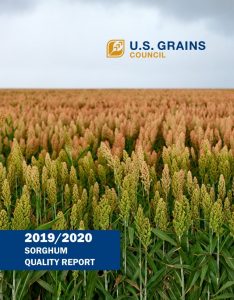
Funded through the U.S. Department of Agriculture’s Foreign Agricultural Service (USDA’s FAS) Agricultural Trade Promotion (ATP) program, the 2019/2020 USGC Sorghum Quality Report provided international customers and other interested parties accurate, unbiased information about the 2019 U.S. sorghum crop to allow foreign buyers and industry stakeholders to make more informed purchasing decisions about U.S. sorghum.
To generate the report’s findings, a total of 62 samples were collected from outbound shipments of U.S. country elevators and analyzed for the grade factors established by USDA as well as chemical composition and other quality characteristics not reported elsewhere.
The report pulled samples from the two largest and most comprehensive growing areas in the United States, including the growing areas in Texas, Kansas, Nebraska, Missouri, Illinois, Oklahoma, Arkansas, Louisiana, South Dakota, Colorado, New Mexico and Mississippi.
Sorghum samples were collected from individual outbound rail or truck shipments at participating elevators across the two regions, then sent to Texas A&M University for chemical composition and physical factor analysis. Scientists there calculated averages and standard deviations for each quality factor tested and reported results for the U.S. aggregate.
Total sorghum damage came in at just 0.2 percent, and broken kernel and foreign material (BNFM) was only 1.7 percent, highlighting how hard the grain is and how well it holds up during handling and storage.
The crop also fared well on a measure of non-detectable tannins – important because they signify the U.S. sorghum crop is a good feedstuff option – something competitors, especially in Argentina, cannot claim.
This report is the first of its kind since the 2016/2017 sorghum crop. The Council rolled out the information through webinars and presented findings during a virtual sorghum conference for the Chinese market in early July.

